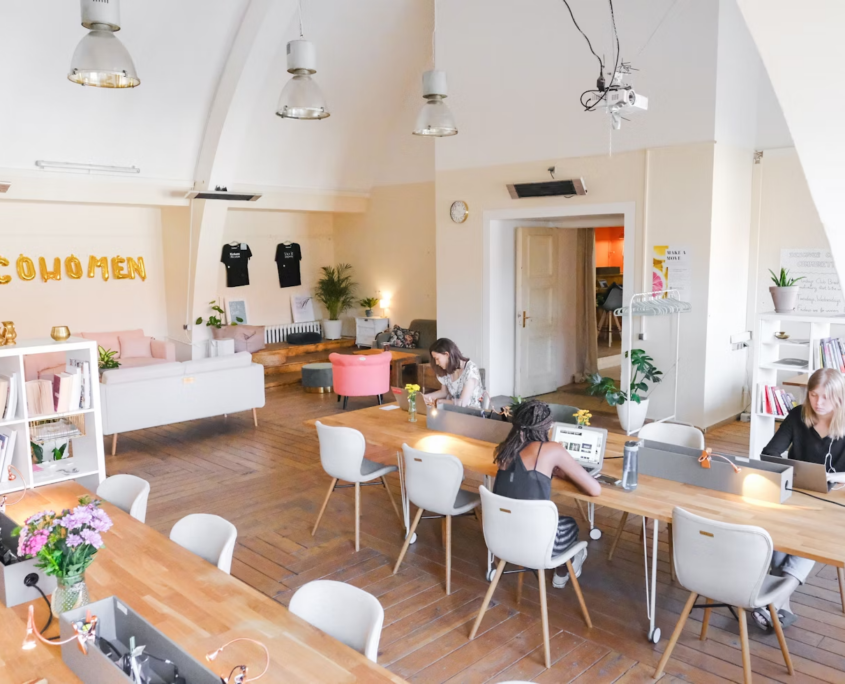2. Enhance MEP systems
Your MEP systems are the mechanisms that make your building work as it is and make it more comfortable for you to live in. It stands for Mechanical, Electrical, and Plumbing.
If you want to make your office more energy efficient, consider looking at your entire MEP system. Sometimes, especially if you weren’t responsible for building your office from the ground up, you might find that some developers cut corners only to inconvenience you due to inefficient MEP systems.
Ideally, you should hire a professional to see where you can change things to suit your budget and create a tangible change in your building’s energy efficiency. You can hire a professional to provide an MEP design service so that you can optimize your MEP systems and make them work well while being more energy efficient.
With a better MEP design, you can make your buildings more energy efficient and improve comfortability in all aspects of your MEP system.
3. Upgrade insulation and seal air leaks
You can change some things in your office building that might feel outside of how you use energy but are—for example, your insulation.
If you have poor insulation in your office building, it will be harder to maintain the temperature that you want the interior of your office building to be. Whether you like cooler office space in the summer days or a warmer building during the colder seasons, poor insulation will make it harder for your Heating, Ventilation, and Air Conditioning (HVAC) system to adapt.
That’s why if you plan on reducing your HVAC work, you should consider looking into your building insulation. Seal any potential sources of air leaks, like poor sealing for windows and windows.
With upgraded insulation and sealing air leaks, you can easily maintain the temperature you want inside your office, and your HVAC won’t have to use as much energy to support that.
4. Implement energy-efficient office equipment
One of the most significant expenses of your office would be the electrical equipment you have to use to do your work. So, one of the things you need to be mindful of when improving energy efficiency in buildings is how you use equipment.
Now, you don’t want to be overly conscious to the point where you’re getting in the way of how your employees do their jobs because you’re penny-pinching by cutting back their electricity use as much as possible. However, some practices make it easier to be more energy efficient without much conscious effort.
For example, simply getting ENERGY STAR-rated office equipment from the start. When equipment has that ENERGY STAR rating, it can meet the energy efficiency standards. That means that they can operate while not using as much energy as you’d think it does.
5. Reduce your peak demand
Peak demand would be the hours of the day when your office uses energy the most. Since you’re operating an office space, that likely would be around the 9 AM to 5 PM workday. To help reduce your building’s energy consumption during peak demand, you should be mindful of how your office uses electricity.
You can reduce energy usage by staggering work hours, conserving energy during peak demand, or using equipment that uses much energy outside peak demand.
For example, you can use dishwashers when they are full of plates and cutlery to watch after office hours instead of at the moment. Getting a bunch of plates and cutleries to ensure you have enough while not running the dishwasher can help you do that.
6. Prevent “phantom energy.”
Leaving equipment plugged into the wall when you’re not using it consumes phantom energy. Phantom energy is a minute thing that can cost you money without you noticing. That’s why you should encourage everyone to get into the habit of unplugging the equipment after use whenever possible.
Of course, it’s also a good idea to have measures to prevent phantom energy if someone forgets to unplug. Energy efficient power strips, for example, are a great way to turn off multiple devices simultaneously by just turning off one switch. You can get your maintenance team to check on these power strips before they leave for the day.
7. Install automatic lights
Automating some of your building’s equipment is a great way to get it to stop consuming energy once they’re not in use. One of the simplest examples of that is with automatic lights.
You can set up automatic lights in places where people are only occasionally there. Supply closets, for example, are a great place to install them. Some office spaces like installing them in bathrooms, but it can be inconvenient if you’re sitting still on the toilet seat and the lights don’t detect movement, putting you in the dark, so do this with caution.
8. Upgrade your ventilation system
Your ventilation system can use some upgrades if you want to help your building’s HVAC system be more energy efficient.
By upgrading your ventilation system, you can reduce the buildup of moisture in your office. At the same time, you can also get better heat recovery ventilation, which helps both in hotter and colder months.
In Conclusion
With these changes, you can make an office building that uses energy in a more controlled way without compromising the work efficiency of the people working in it. Apply these strategies to your office building to create a more energy-efficient building while reducing energy costs overall.


Leave a Reply
Want to join the discussion?Feel free to contribute!